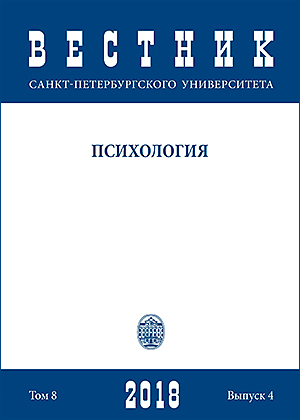Self and Other: Reflections within the biographical reflection
DOI:
https://doi.org/10.21638/11701/spbu16.2018.404Abstract
The article analyses with forms of biographical reflection of personality, namely a “life reflection of Self ” as the reflections about own life and life events, and a “life reflection of Other” as the reflections about cultural life scripts which became interiorized mental structures. We argue that the development of biographical reflection in the ages 17–65 years it is to the successive alternation of the forms of biographical reflection and related to change a content of the autobiographical narratives. One sample consisted of 760 people (17–65 years) and the second sample — 260 people (18–65 years). In the study the forms of biographical reflection and the characteristics of autobiographical narrative (monologicality and dialogicality) were measured. A monologicality is a characteristic of text about oneself and owns life course, and a dialogicality is a characteristic of text about life together with a trusted person about his life course. A study testing that level of a “life reflection of Self ” is higher than a “life reflection to Other” in 17–25 years and 45–65 years, and level of a “life reflection of Other” is higher than a “life reflection of Self ” in 25–45 years. We found that the association between the forms of biographical reflection and content of autobiographical narratives, such that participants Вестник СПбГУ. Психология. 2018. Т. 8. Вып. 4 369 who reported higher levels of a “life reflection of Self ” exhibited monological autobiographical narratives, and that participants who reported higher levels of a “life reflection of Other” exhibited dialogical autobiographical narratives.
Keywords:
biographical reflection, Self, Other, autobiographical narrative, adulthood
Downloads
References
Downloads
Published
How to Cite
Issue
Section
License
Articles of "Vestnik of Saint Petersburg University. Psychology" are open access distributed under the terms of the License Agreement with Saint Petersburg State University, which permits to the authors unrestricted distribution and self-archiving free of charge.




